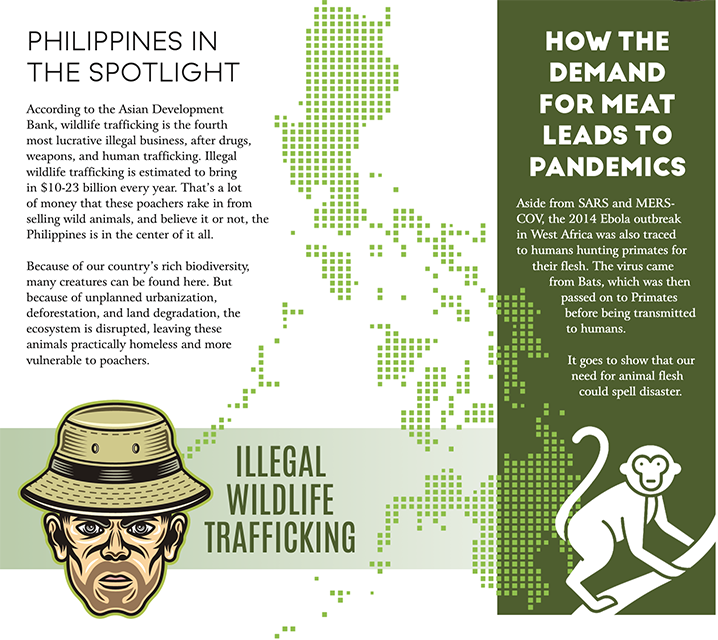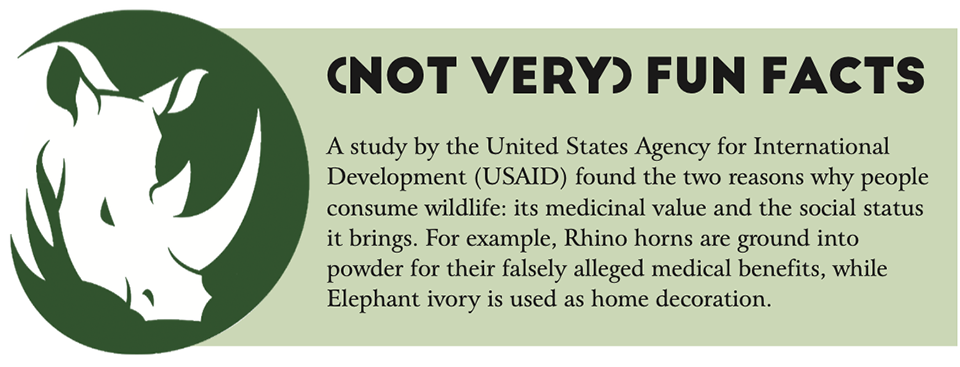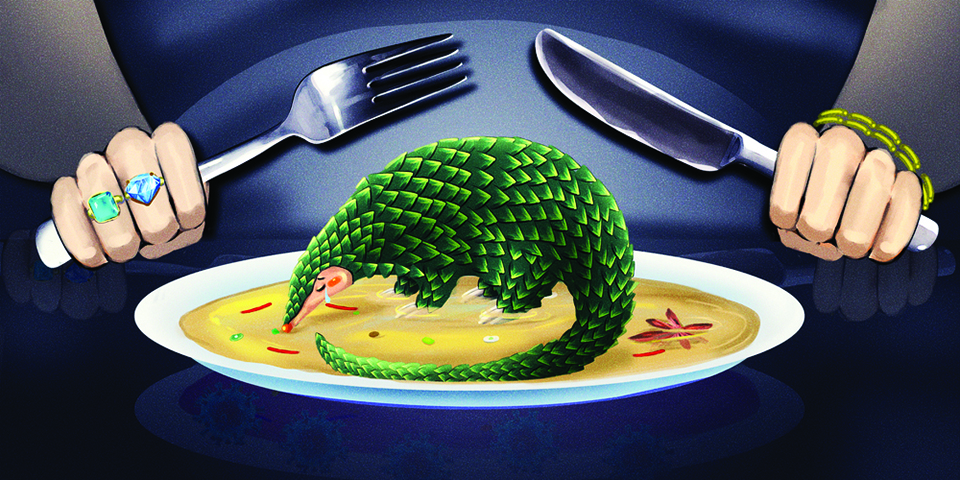By MARTINA JAUIN MENDOZA
First, there was SARS. Then, MERS-COV. Now, it’s COVID-19. What do these diseases have in common? They are zoonotic diseases. The viruses that cause them come from animals before they are eventually transmitted to humans. They also tend to stop the world in its tracks, especially the latest one known as COVID-19.
How did we get here? The podcast episode by Teka Teka Explains about the role of the Philippines in the wildlife trafficking that birthed COVID-19 will answer this question.

A STRIKING START
Imagine that you are in a market. The place is crowded with buyers haggling for lower prices. Animal flesh hangs from large hooks, some of them smelling rotten. Flies are everywhere.
Next to the cut-up animal body parts is a Pangolin locked up
in a cage. He looks hurt; many of his scales are gone, exposing his peach-colored body. The flies don’t spare him. He looks quite ill, as if he’s on the brink of death.
Wet markets like these are the perfect environment for zoonotic diseases to thrive. It was suspected that COVID-19 first came from a Pangolin in Wuhan, and if that were the case, then these animals wouldn’t even be there if not for poachers.
WHAT IS A PANGOLIN?

A Pangolin is a scaly mammal. This creature looks like an amalgam of an Armadillo, a Lizard, an Iguana, and a Sloth.
Some nationalities believe that the Pangolin’s scales can cure all kinds of illnesses, from cancer to Parkinson’s disease. Pangolin flesh is also considered luxury food in some countries.
Thankfully, there is a global ban on the
hunting of all eight species of Pangolins, although this has barely deterred the traffickers.

ILLEGAL WILDLIFE TRADE IN THE PHILIPPINES
The Philippines is considered an important source, not to mention a transit and destination point, for traffickers.
Ma. Ronely Bisquera-Sheen, executive director of the non-profit organization Tanggol Kalikasan, stated that wildlife trafficking is a lucrative business here, because, “Hindi pa rin talaga natin nata– track yung mga malalaking sindikato. Kadalasan ang nahuhuli yung mga maliit lang, yung mga nasa front line […] kaya patuloy pa rin. (We still cannot track the large syndicates; we usually catch those sellers in the front line […] that’s why [illegal trafficking] continues.)”

KEEPING UP WITH THE TIMES
One reason behind the fast spread of illegal wildlife trade is the use of modern technology, specifically social media. One simple Facebook search for an exotic animal can yield a list of sellers quite easily. Booking a courier is also one key factor in the illegal trade of exotic animals due to the cheap cost.
It does not help that our wildlife conservation law is very outdated. Republic Act 9147, or the Wildlife Resources Conservation and Protection Act, was enacted in 2001. Bisquera-Sheen said that it was high time for the government to update the law, especially with crime syndicates capable of upgrading their means of catching exotic wildlife through high-powered weapons.
ILLEGAL “MEAT” IN MANILA

Surprisingly (or not), there is a demand for exotic animal flesh in Metro Manila. For instance, Pandi the Pangolin was smuggled to an exclusive subdivision in Alabang where the animal was supposed to be slaughtered for meat.
THE PRICE TO PAY
There are two bills that seek to amend the Wildlife Act. The House of Representatives already passed a countermeasure, but it is not enough to stop illegal trade. There needs to be support from the Filipino community.
The USAID study uncovered a very disturbing fact: People who buy the products of wildlife trade, such as ivory,
know that the animals are being killed for these products but are indifferent about it, because “[The animals were] too far away from their lives to think much about.”
However, this could not have been farther than the truth: All of nature is interconnected, after all, and what happens to animals will impact humans. And now, we are now facing the unfortunate consequences of this grave mistake.






